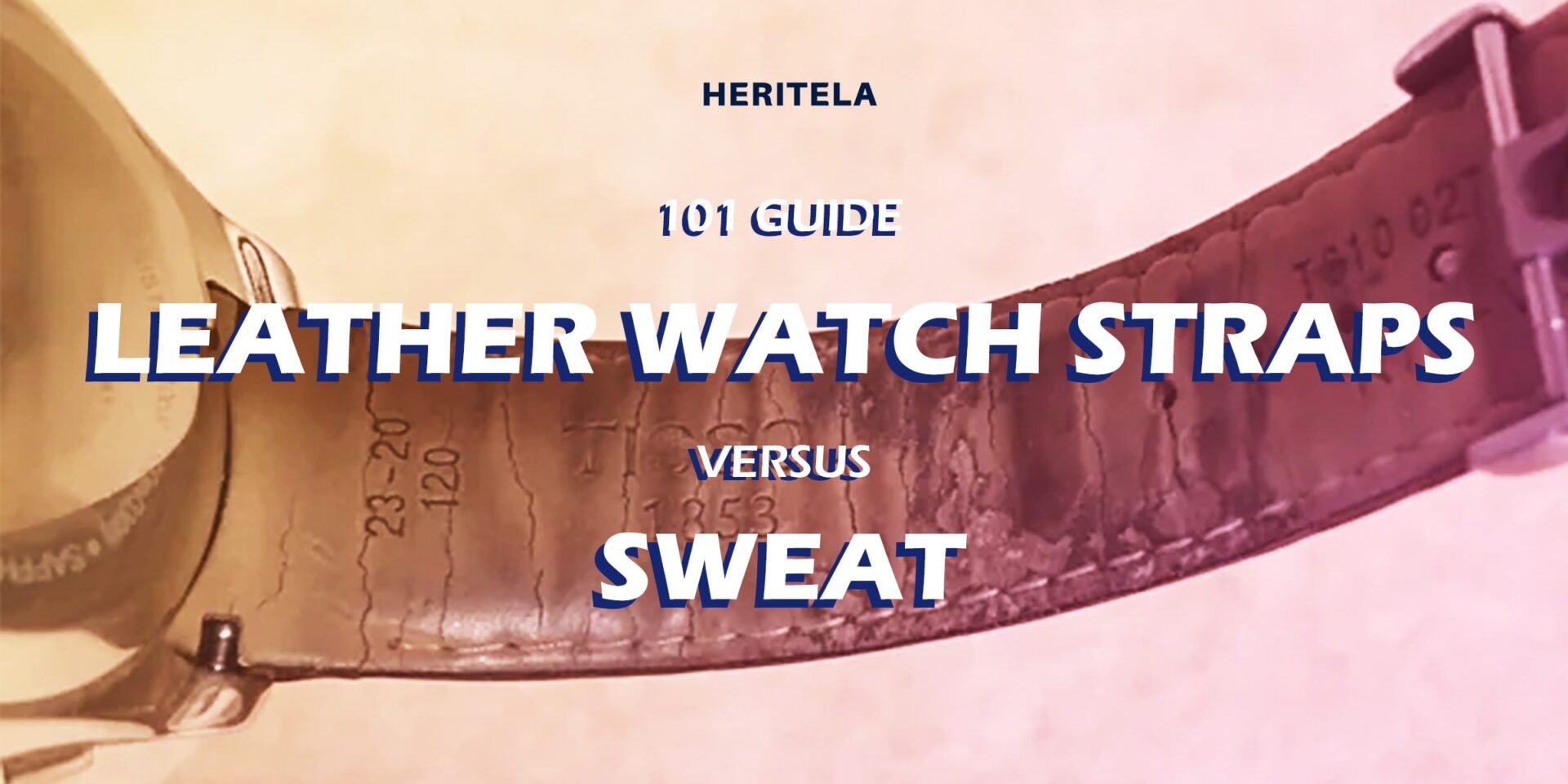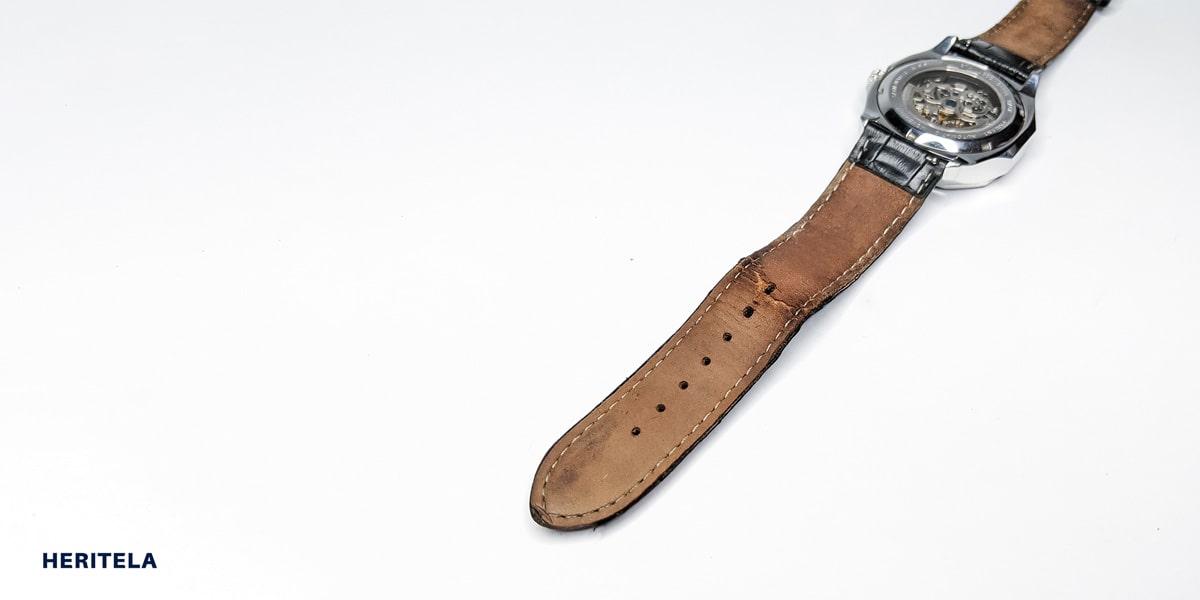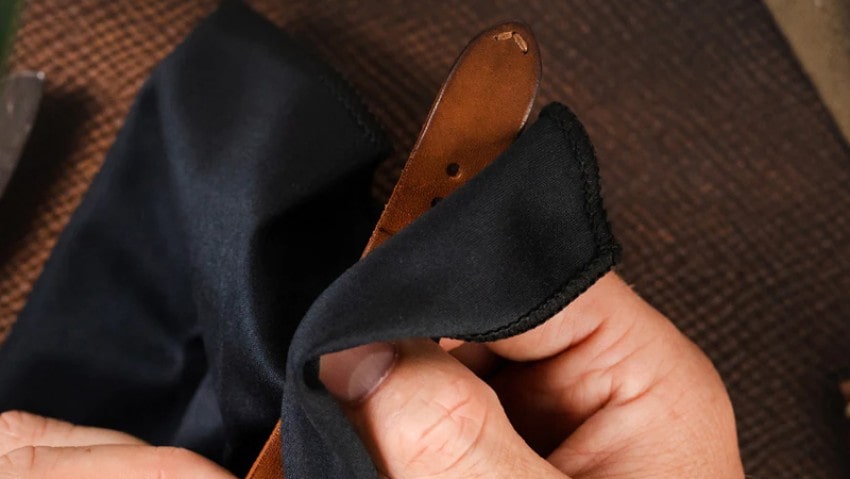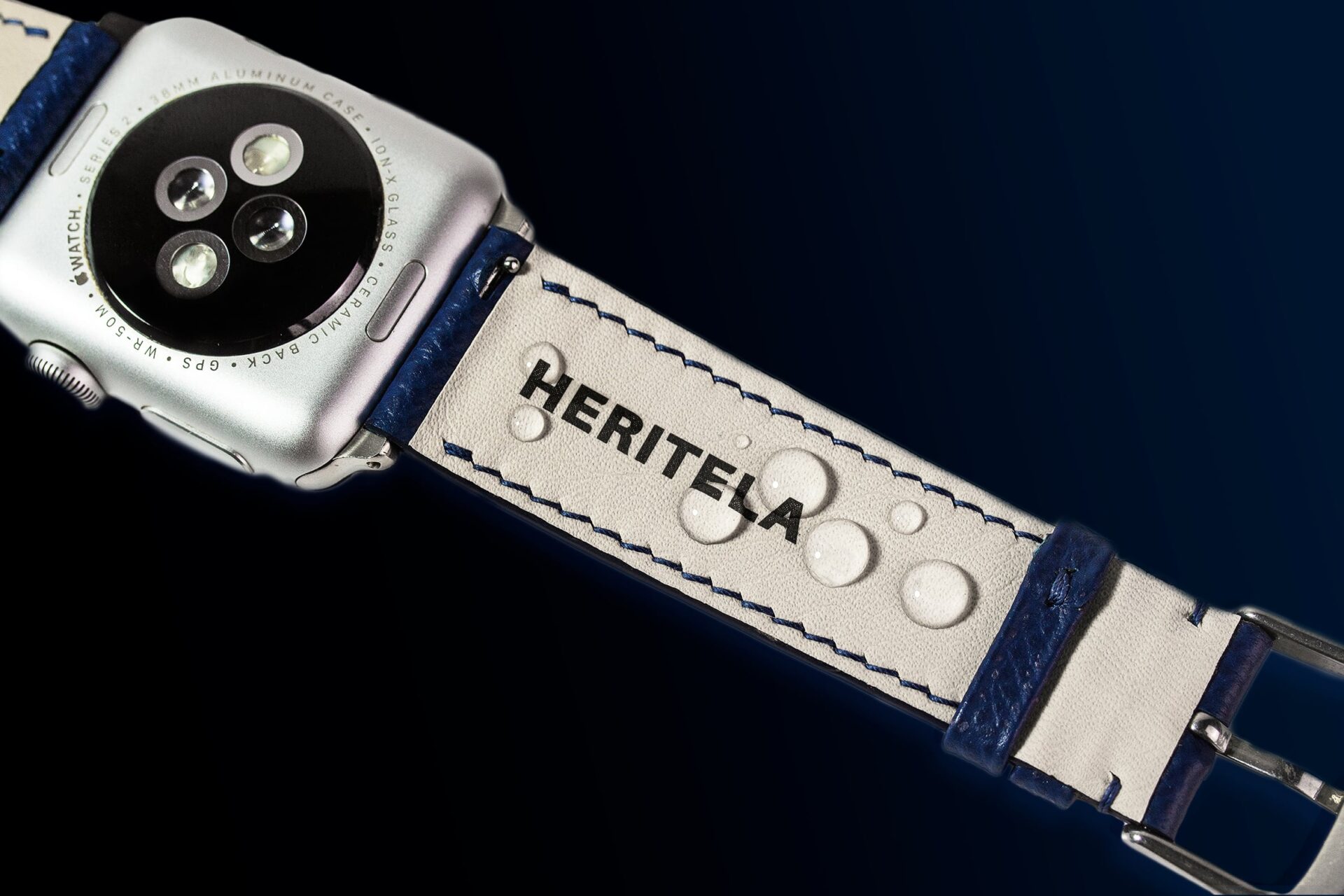Leather watch strap and sweat 101: Causes and Solutions
For centuries, leather has been prized for its timeless elegance and durability. However, sweat can be a major adversary regarding leather watch straps. The combination of sweat and leather often leads to discomfort and a shorter lifespan for your straps. In this article, we’ll explore why sweat is bad for leather, how to prevent damage, and how to resolve issues caused by sweat.

Why sweat is bad for leather
Leather naturally absorbs sweat
Genuine leather is a natural material made from animal hides known for its durability, flexibility, and luxurious feel. However, one of its defining traits is its porous nature. This means that leather can absorb moisture, including sweat, which can compromise its integrity over time. Unlike synthetic materials, leather does not have a built-in resistance to moisture or salt, making it vulnerable to the effects of sweat.
Issues caused by sweat

Color fading and staining: Sweat contains water, salts, and oils that can seep into the leather, causing discoloration. Over time, these elements can fade the natural or dyed color of the leather, leaving it blotchy or uneven.
Unpleasant odors: As sweat gets absorbed into the leather, it creates a damp environment that encourages bacteria and mold growth. This leads to unpleasant smells that are difficult to remove without damaging the material further.
Structural Damage and Rot: Prolonged exposure to sweat can weaken the leather’s fibers, making it prone to cracking, peeling, or rotting. Once leather begins to rot, it’s often irreparable, necessitating a replacement strap.
How to prevent sweat damage

Give proper care periodically
Regular maintenance can significantly extend the lifespan of your leather watch strap. Here are a few tips:
- Clean after heavy use: After wearing your watch, wipe the strap with a soft, slightly damp cloth to remove any sweat or dirt.
- Condition the leather: Apply a leather conditioner every few months to keep the strap hydrated and flexible. This helps prevent cracking and preserves its natural finish.
- Use waterproofing agents: Treat your strap with a leather waterproofing spray or cream to add a protective layer against moisture.
- Store properly: When not in use, store your watch in a cool, dry place to prevent mold and mildew growth.
Avoid wearing during heavy sweat occasions
If you’re engaging in activities that involve heavy sweating, such as exercising, consider swapping out your leather strap for a more sweat-resistant alternative like silicone, metal, or nylon. Leather straps are best suited for casual or formal occasions where sweat exposure is minimal.
The best way: Select the proper strap lining at the beginning

Not all leather watch straps are created equal. The ability to resist the sweat of a strap will depend on its lining (backside) material.
Below are some popular types of materials for strap lining and their properties:
- Full-grain leather: The most common and basic.
- High breathability.
- Poor sweat resistance.
- Chrome-tanned leather: Less common.
- Better sweat resistance.
- Chromium may irritate your skin.
- Rubber: Less common.
- Excellent sweat resistance.
- Fewer choices of color and leather types.
- Synthetic Silicone leather: Less common.
- Excellent sweat resistance and free to choose your desired color and leather type.
- Low breathability.
More detailed comparisons can be found in this Guide to choose sweatproof watch straps.
How to resolve sweat-damaged leather

Despite your best efforts, your leather watch strap may still experience sweat-related issues. Here’s how to cope with them:
Cleaning:
- Use a soft cloth dampened with mild saddle soap and water to gently clean the surface. Avoid soaking the leather, as excessive water can cause further damage.
- For tougher stains, consider using a specialized leather cleaner. Test it on a small, inconspicuous area first to ensure it doesn’t discolor the leather.
Removing Odors:
- Sprinkle a small amount of baking soda on the strap and let it sit overnight to absorb odors. The next day, brush it off gently.
- Alternatively, place the strap in a sealed bag with activated charcoal or silica gel packets to neutralize smells.
Repairing Cracks or Peeling:
- Use a leather conditioner to restore moisture and flexibility to the strap.
- If the strap has severe damage, consult a professional leather repair service. They can often restore its appearance and strength.
Replacement:
If the damage is too extensive, it may be time to invest in a new strap. When replacing, opt for a sweat-resistant or hybrid model to avoid future issues.
Conclusion: Prevention is better than treatment
Prevention is always the best approach when it comes to leather watch straps and sweat. By selecting the right leather type, avoiding excessive sweat exposure, and providing regular care, you can enjoy the elegance of a leather strap for years to come. If sweat damage does occur, timely cleaning and conditioning can mitigate the effects. Balancing style and practicality will ensure your leather watch strap remains a lasting and cherished accessory.

Comments
Close